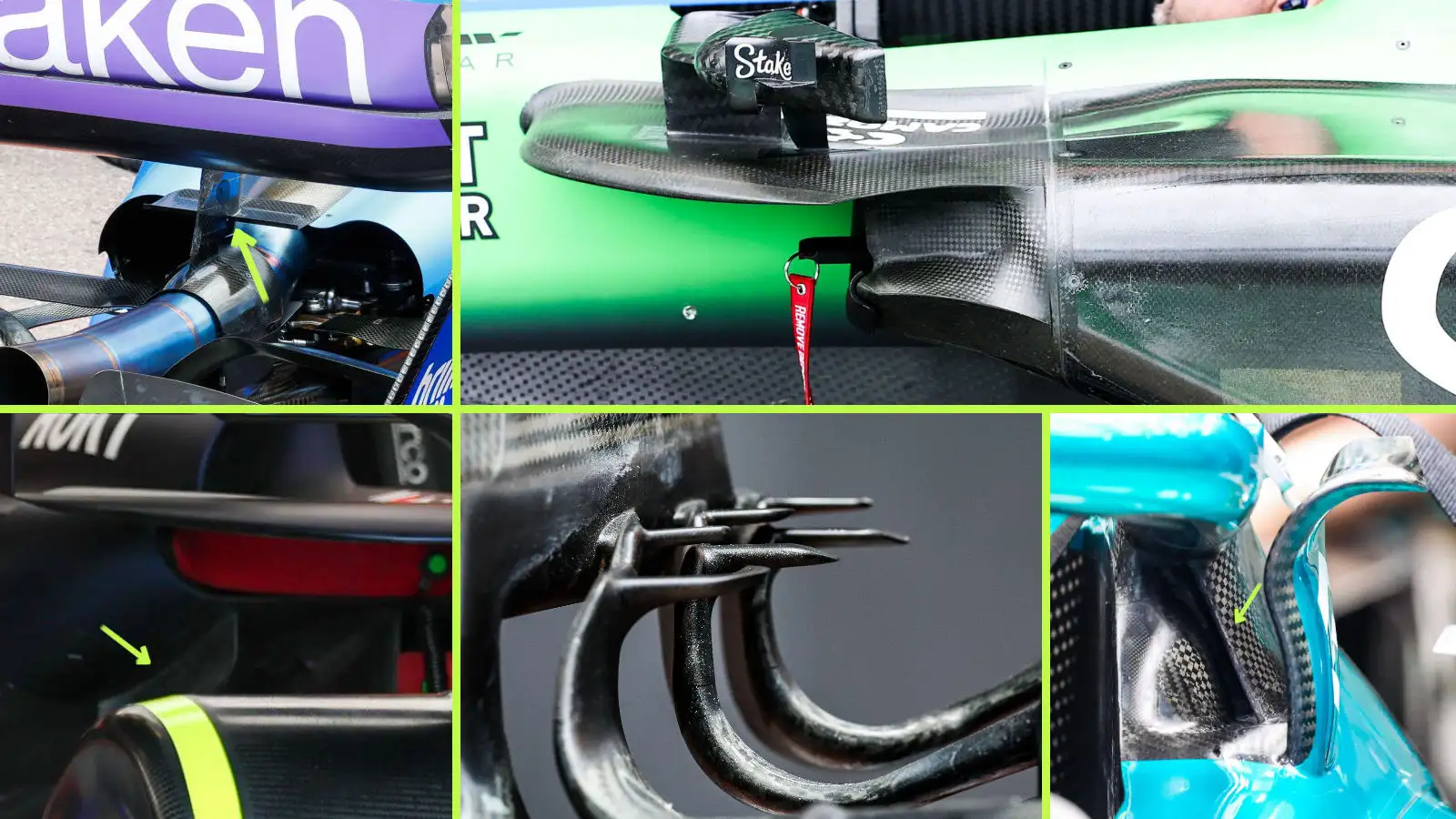Formula One’s designers are always looking for an edge over their competitors, no matter how small it may seem.
This often leads to some interesting solutions arising, as they poke and prod at what’s possible within the regulatory framework. And, whilst some designs will obviously be more all-encompassing, there’s often some small but neat solutions that catch the eye.
Williams mini-wing
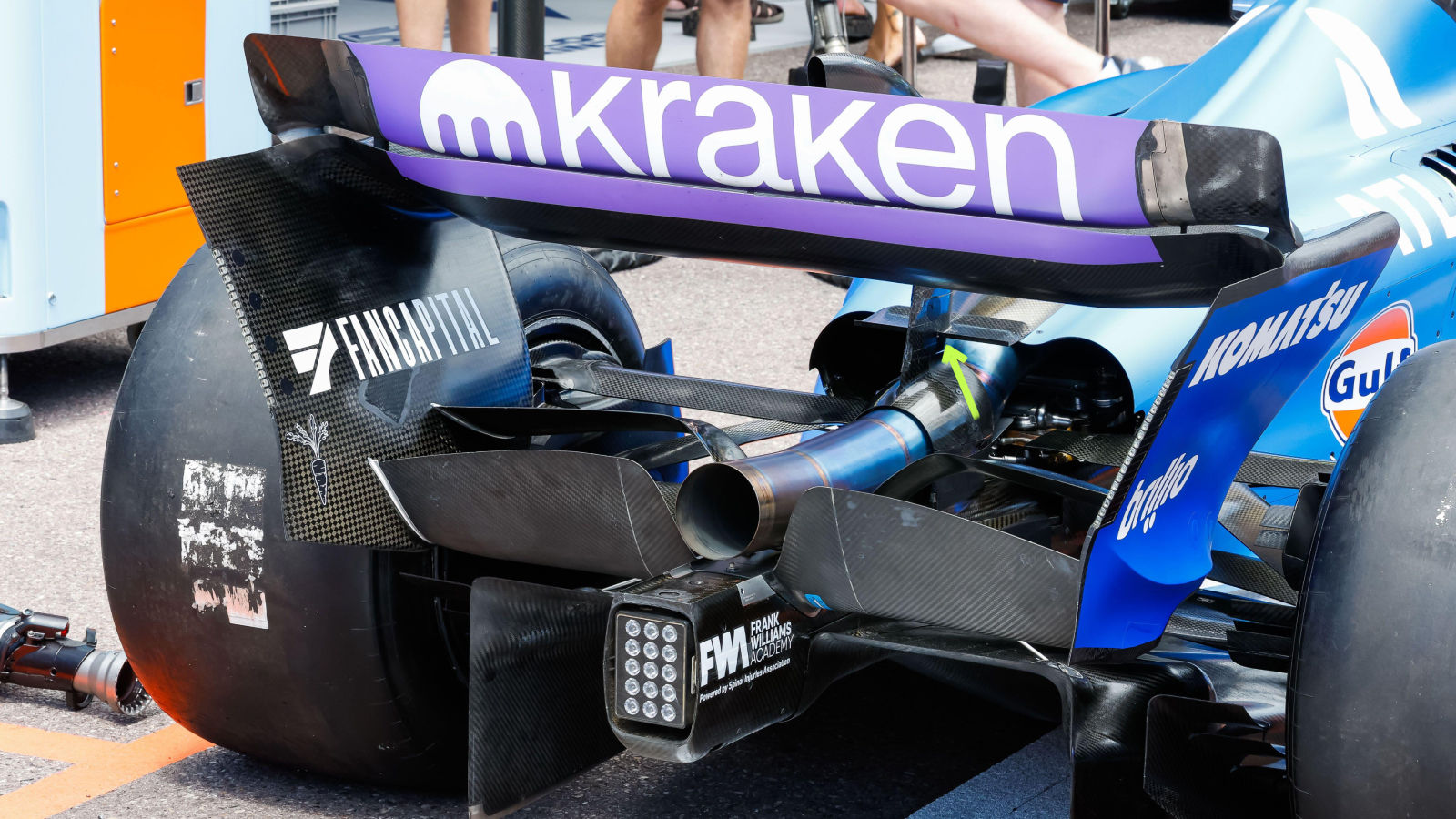
If there’s a space within a box region that’s created by the regulations you can guarantee that if there’s not already a need for bodywork to be there, there’s been a question asked whether a winglet can be put there.
Some of these will clearly be more beneficial than others, with some having a direct performance advantage, whilst others can be used to influence flow conditions downstream of them.
In Williams’ case they introduced a mini-wing at the start of the season, mounted either side of the rear wing support pillar. It’s a similar design to the ‘Monkey seat’ we saw during the V8 era, albeit this simplistic winglet sits above the exhaust outlet in order to help unify the surrounding flow structures.
Williams have used the mini-winglet sparingly during the season, often combined with their higher downforce configuration rear wing and beam wing layouts.
Aston Martin Halo trick
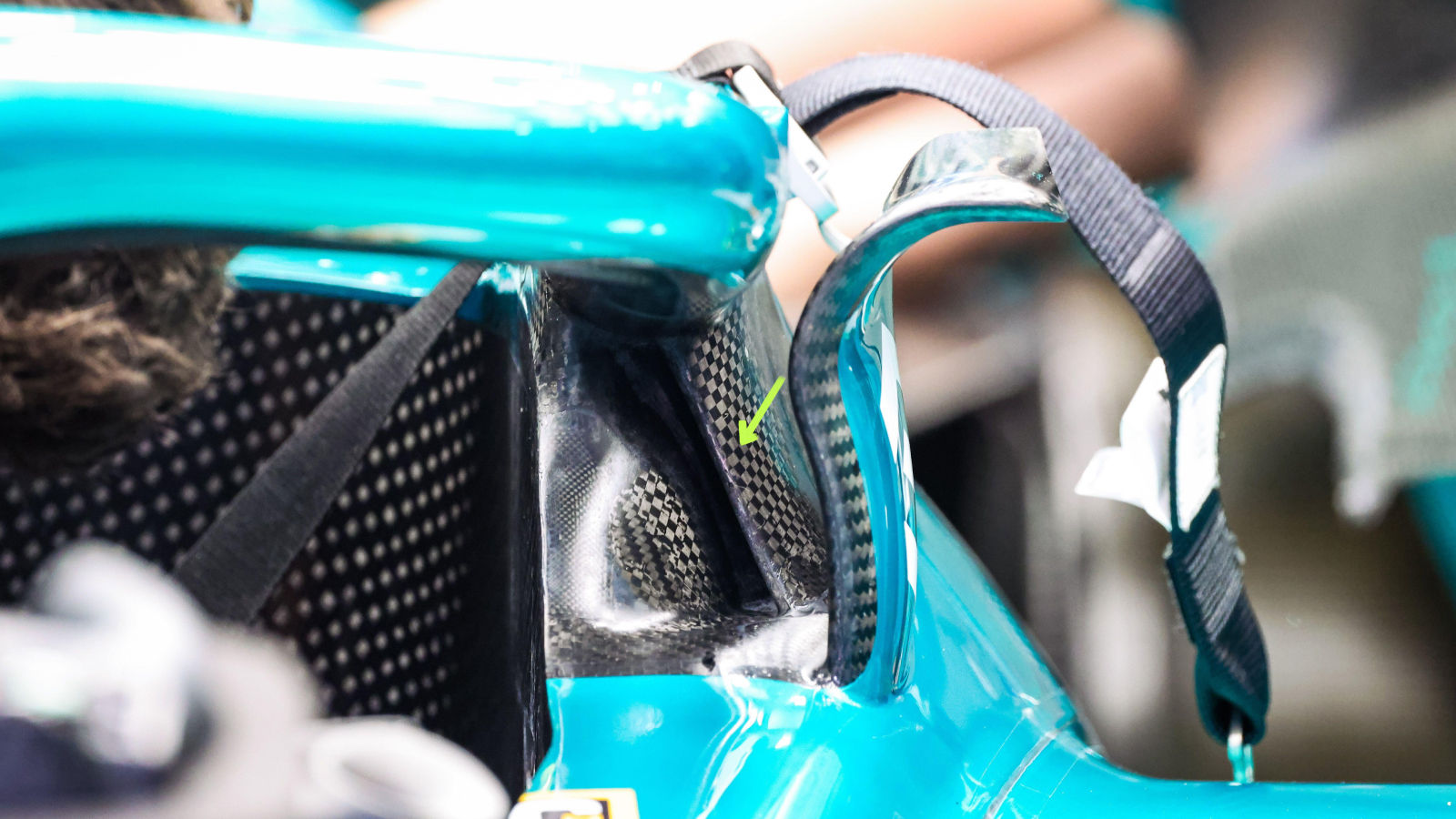
Aston Martin are another team to have shown their hand early, with a unique solution found beside the rear leg of the halo that helps to reduce some of the losses associated with that region.
The slender, vertical slot takes some of the airflow that would ordinarily spill around the halo’s fairing and sends it inboard, tidying up some of the inefficiencies that might otherwise exist.
Sauber sidepod solution
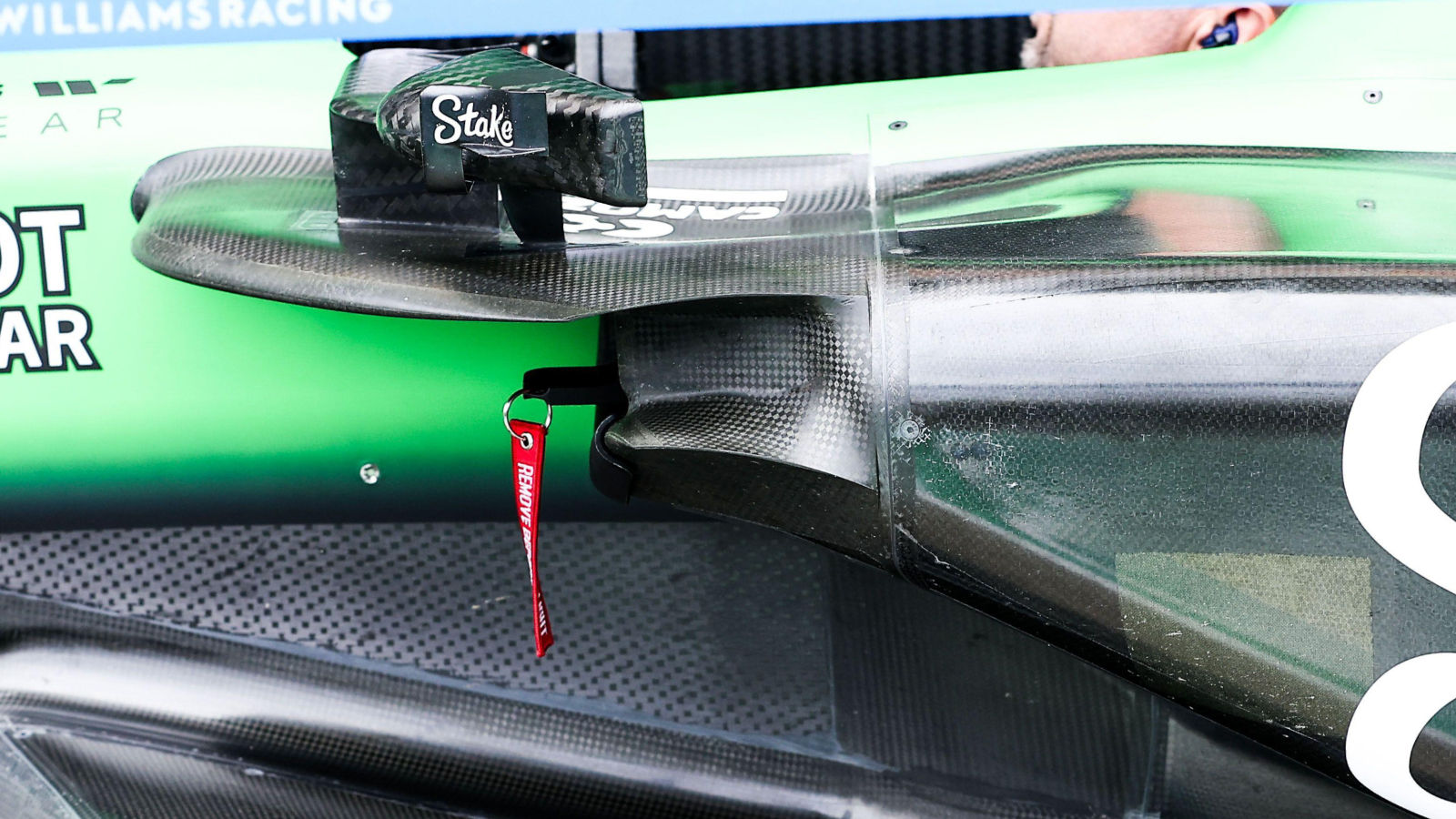
Sauber introduced a new sidepod layout at the first race of the season, in Australia, which featured a new and novel solution that built on some of the design features already seen from their rivals.
Another outcropping could be found under the inlet that’s similarly sized, in the outboard region, to the mid-wing above and extends around the sidepod’s flank.
The layout pushes the boundaries of what’s been done geometrically in this portion of the car to this point and not only sets about improving cooling, owing to the resultant change in the inlet’s shape, it also boosts how the airflow moves around the sidepod’s shoulder.
More Formula 1 technical wizardry via PlanetF1.com
👉 Uncovered: The genius behind Red Bull’s short-lived exhaust-blown diffuser
👉 F-Duct uncovered: The banned McLaren innovation that gave birth to DRS
Red Bull join the sidepod party
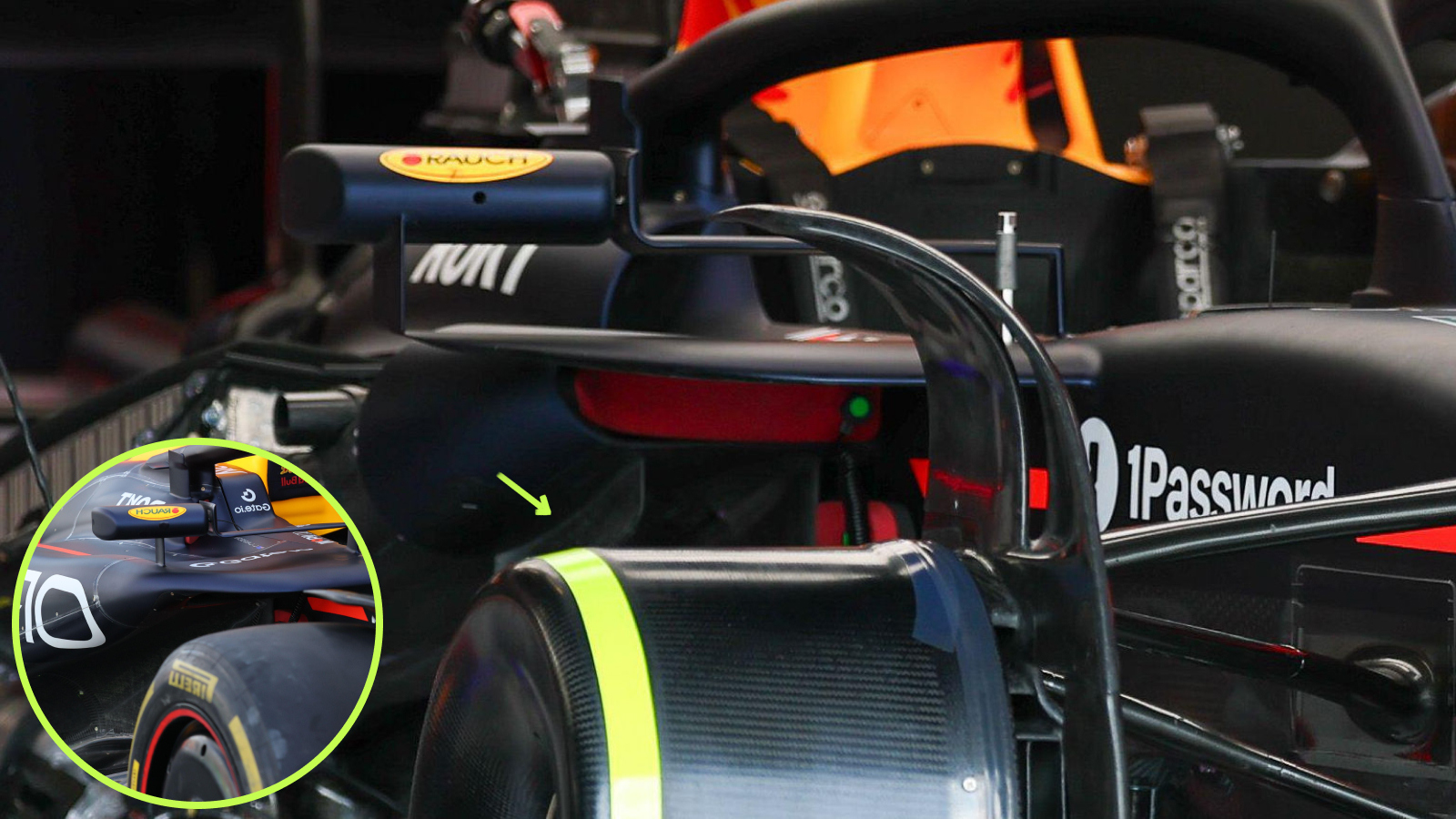
Red Bull also took advantage of adding a vane to their sidepod, as part of the update package they introduced at the Emilia Romagna Grand Prix.
The arrival of the vane was made hand-in-hand with the introduction of a revised layout at the front of the sidepod, whereby Red Bull adopted the ’mid-wing’ solution, similar to what we’ve seen from the likes of McLaren already.
This allowed them to rethink the design of their mirror stalks too, with the outermost tip of the mid-wing connected to the stalk.
Meanwhile, given their sidepod layout is quite different to Sauber’s, their vane installation can be found in the undercut portion of the sidepod instead, helping to divert the airflow around the underside of the bodywork and improve its passage downstream.
McLaren ‘mermaid tails’
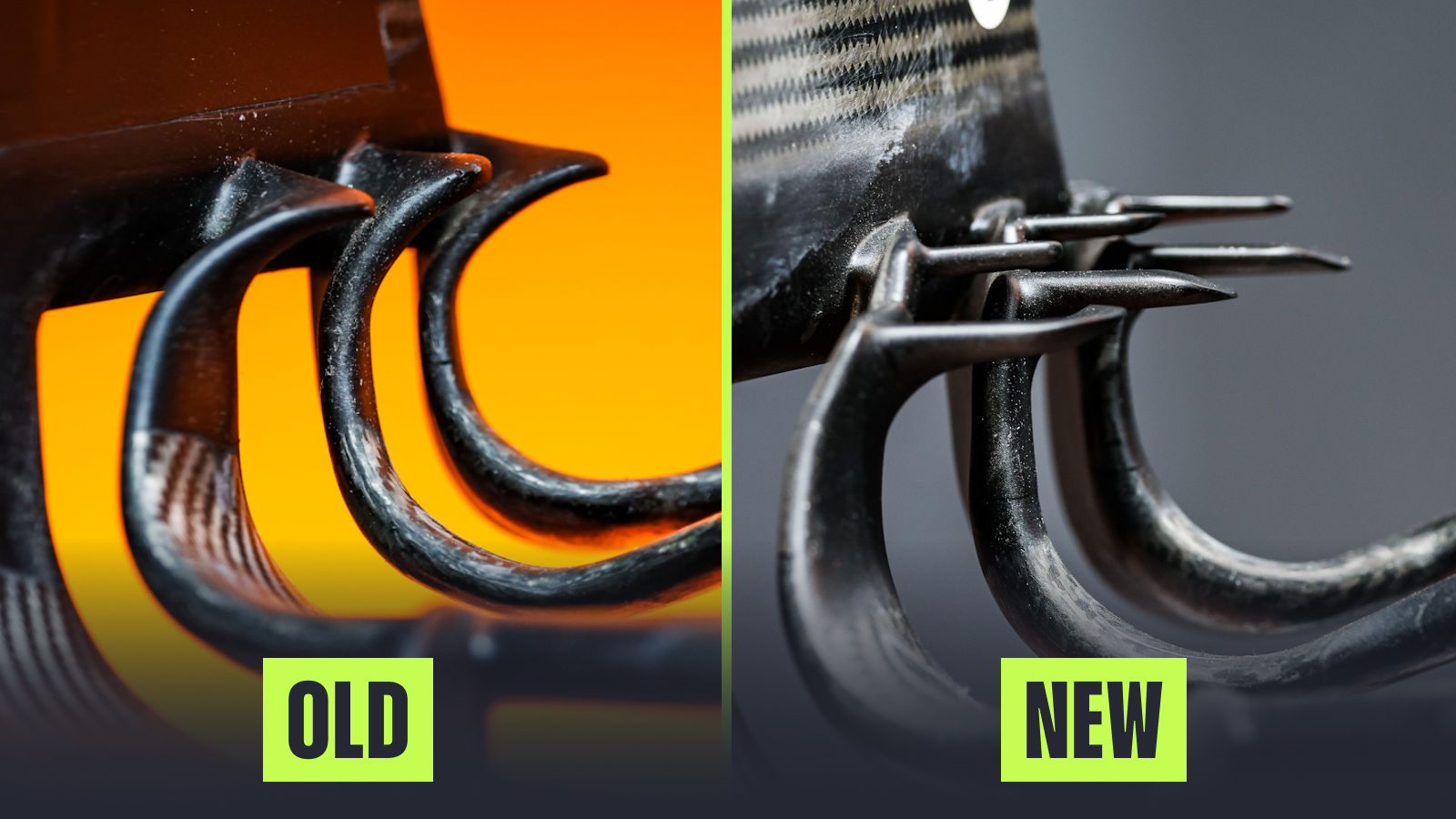
McLaren introduced a new front wing design at the Canadian Grand Prix, with alterations made to the outboard section of the flaps where they meet with the endplate. This has already been an area of intense development for the teams during this regulatory cycle, owing to how different the airflow behaves around the juncture.
Mercedes were the first to take advantage of a semi-detached flap tip solution, combined with an opening in the lower rear quarter of the endplate in 2022 and whilst the FIA forced them to rethink the approach the following season, they’ve pushed the design forward ever since.
All of the teams have followed suit, to one degree or another, in order to maximize the performance benefits that can be leveraged from the outwash being generated.
McLaren’s new design, which features a clutch of winglets, described by McLaren as ‘mermaid tails’ sees the team replace the semi-detached and curved flap tips with straighter variants, upon which the mermaid tail winglets are mounted.
Read next: McLaren sanction major Belgian GP upgrade after Silverstone tests

